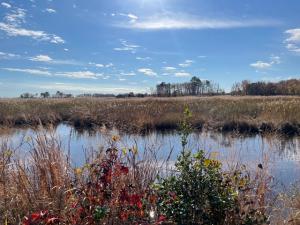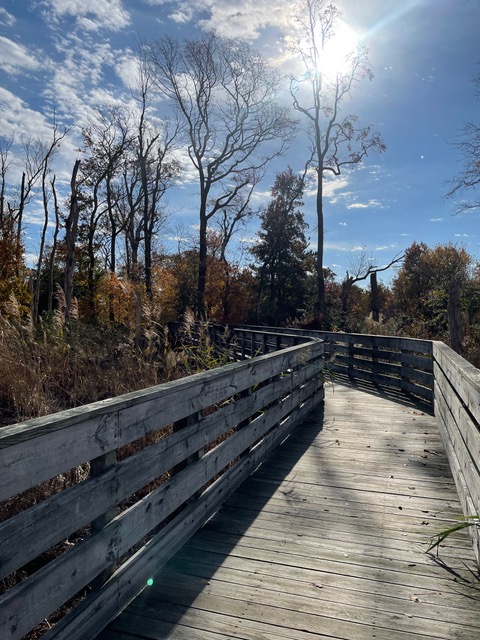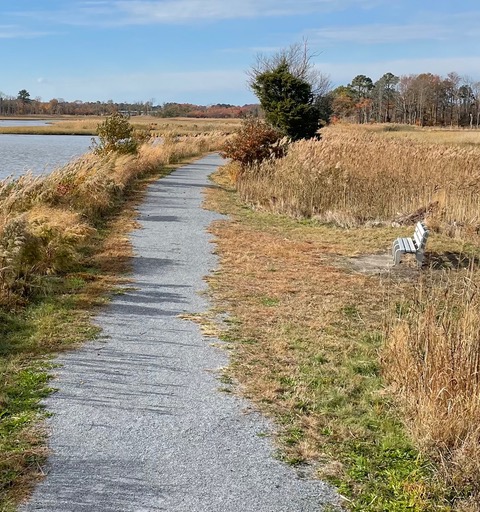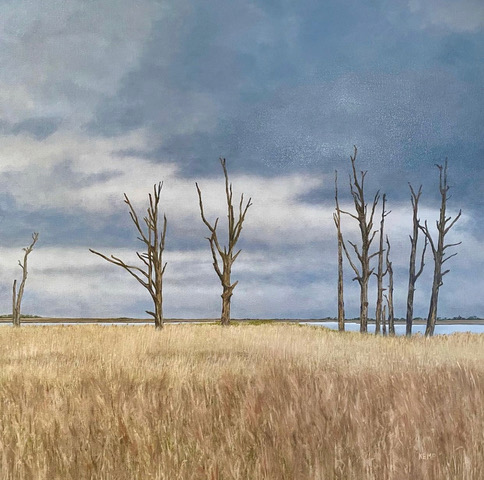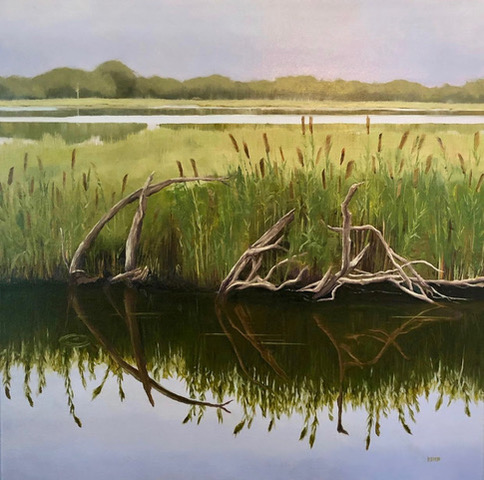Discover harmony at Prime Hook!
One of the Cape Region’s finest places to visit is Prime Hook National Wildlife Refuge. Whenever I want some quiet, reflective time, I seek a haven there.
The refuge was officially established in 1963 for use “as an inviolate sanctuary, or for any other management purpose, for migratory birds,” according to its website, fws.gov/refuge/prime_hook.
Although many people take the straight path which abuts the water and leads to a lookout point, there are also many short trails to use. All of the natural paths are flat and easy to navigate for anyone. Recently, I passed some happy grandparents, one pushing a stroller and another holding a toddler’s hand.
One of the trails includes a wooden-plank walkway through the woods, providing a fun diversion for all ages including dog walkers, and it only takes about 20 minutes to make the scenic loop and then choose another trail.
Prime Hook’s website explains, “The refuge is a stopover site for migratory birds as they travel up and down the Atlantic Flyway and provides protected breeding habitat for federally and state-listed threatened and endangered species. ... Hundreds of native plant and animal species thrive in this mosaic of ... diverse cover types that provide habitat for 308 species of birds, 51 species of fish, 45 species of reptiles and amphibians, 37 species of mammals, and an array of rare insect and plant species. Due to Prime Hook’s strategic location on the Delaware Bay, the refuge has national conservation significance as a designated RAMSAR Wetland of International Significance Site (1999), American Bird Conservancy-Important Bird Area (2000), and a Western Hemisphere Shorebird Reserve Network site (1986).”
Many local artists and photographers frequent the park for inspiration, including James Kemp. Last month at a Rehoboth Beach Writers’ Guild event called Art in the AM, Kemp shared his painting “Ghost Forest” and explained its origin: “As sea level rises, more and more saltwater encroaches on the land. Along the Delaware coast, as in other coastal areas and estuaries, the invading sea water advances and overtakes the fresh water that deciduous trees rely on, slowly poisoning the living trees and leaving a haunted ghost forest of dead and dying timber.”
About his love of Prime Hook, Kemp said, “I was drawn to the simplicity of each of the scenes and how they so very much represented the Prime Hook area – the wildlife, the beautiful marsh and the impact of the environment on the area. If you walk the trails at Prime Hook, you will see each of these scenes and so much more. This won’t be the last of my work from this beautiful park.” Several of Kemp’s works are on display at The Pines restaurant in Rehoboth Beach, and his website is kempfineart.com. To learn more about Art in the AM, visit rehobothbeachwritersguild.com.
The refuge may be visited from one-half hour before sunrise to one-half hour after sunset seven days a week. Information about programs such as lecture, bird walks and educational activities can be found on the Prime Hook website, fws.gov/refuge/prime_hook.
Prime Hook National Wildlife Refuge is located on the western shore of the Delaware Bay, approximately 22 miles southeast of Dover, the state capital, and 64 miles southeast of Wilmington.














